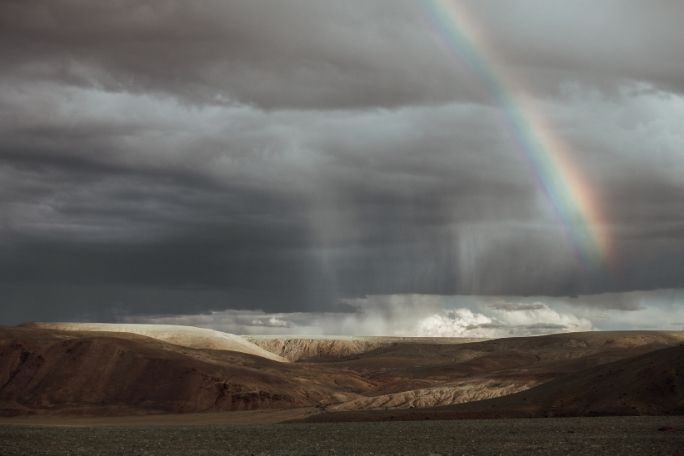Lesson summary
Rain is a crucial element to the lifecycle of many species living in the Australian desert. In this wide-ranging lesson, students explore how desert species flourish in the advantageous conditions present after a rainfall, and, conversely, how they have adapted to survive long periods of dry weather. Older students explore the interconnectedness of desert species through a food chain, and how rain can indirectly impact predators that live on the top of the food chain.
Learning intentions:
Students understand...
- how the survival of some native Australian desert species is linked to the cycle of rainfall
- how the survival of some native Australian desert species is linked to the lifecycles of other desert species.
Success criteria:
Students can...
- communicate through artwork the impact of rain on the habitat and fauna of the desert.
Lesson guides and printables
Lesson details
Curriculum mapping
Australian Curriculum content descriptions:
Year 4 Science:
- Living things have life cycles (ACSSU072)
- Living things depend on each other and the environment to survive (ACSSU073)
Year 6 Science:
- The growth and survival of living things are affected by physical conditions of their environment (ACSSU094)
Years 3 & 4 Visual Arts:
- Present artworks and describe how they have used visual conventions to represent their ideas (ACAVAM112)
Extended Content descriptions:
Year 7 Science:
- Interactions between organisms, including the effects of human activities, can be represented by food chains and food webs (ACSSU112)
Syllabus outcomes: ST2-10LW, ST2-11LW, ST3-11LW, SC4-15LW, VAS2.1, VAS2.2
General capabilities: Literacy, Critical and Creative Thinking
Cross-curriculum priority: Sustainability
Relevant parts of Year 4 Science achievement standards: Students describe relationships that assist the survival of living things and sequence key stages in the life cycle of a plant or animal
Relevant parts of Year 3 & 4 Visual Arts achievement standards: Students use visual conventions, techniques and processes to communicate their ideas
Relevant parts of Year 6 Science achievement standards: Students describe and predict the effect of environmental changes on individual living things
Relevant parts of Year 7 Science achievement standards: Students predict the effect of human and environmental changes on interactions between organisms and classify and organise diverse organisms based on observable differences
This lesson is part of the wider unit of work: Beyond the Bushfires – Primary
Time required: 50 mins
Level of teacher scaffolding: Low – facilitate class discussion, support students in their independent research and artwork
Resources required
- Art supplies – coloured pencils and textas
- A device capable of presenting a video to the class
- Student Worksheets – one copy per student
- Whiteboard
- White Paper
Skills
This lesson is designed to build students’ competencies in the following skills:
- Communication
- Creativity
- Critical thinking
Additional info
In partnership with The Conversation, the Beyond the Bushfires series brings the words of scientists who are actively involved in research and science communication into classrooms throughout Australia. Students will explore evidence-based research embedded in the context of real-world practice.
Additional thanks to the Ian Potter Foundation, John T Reid Charitable Trusts and The Myer Foundation, for generously supporting the development of these lessons


Welcome back!
Don't have an account yet?
Log in with:
By signing up to Cool.org you consent and agree to Cool's privacy policy to
store, manage and process your personal information. To read more, please see
our privacy policy here(Opens in new tab).
Create your free Cool.org account.
Many of our resources are free, with an option to upgrade to Cool+ for premium content.
Already have an account?
Sign up with:
By signing up to Cool.org you consent and agree to Cool's privacy policy to
store, manage and process your personal information. To read more, please see
our privacy policy here(Opens in new tab).